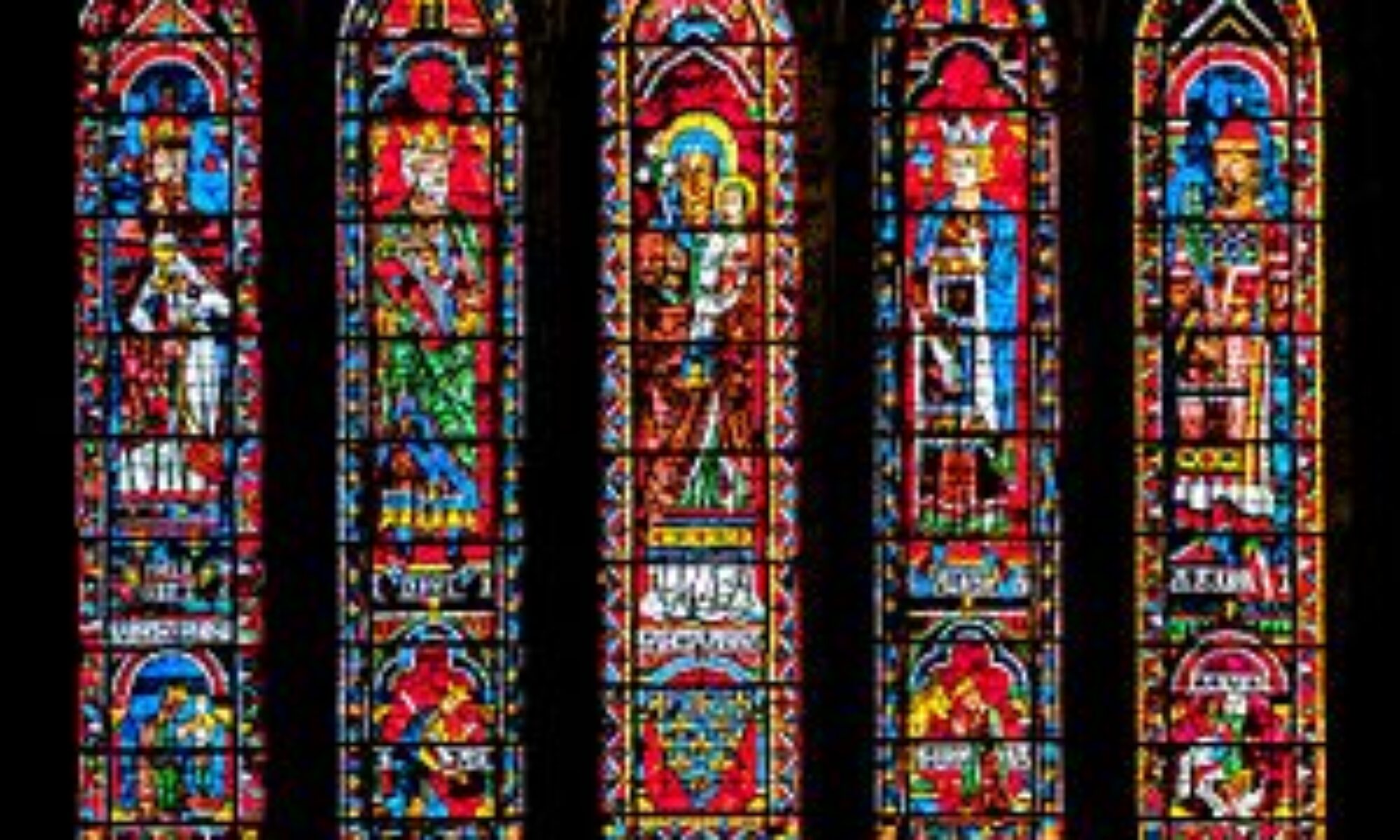“God did not tell us to follow Him because He needed our help, but because He knew that loving Him would make us whole.” –Saint Irenaeus
Saint Irenaeus
Bishop and Martyr
c. 125–c. 200
Patron Saint of apologists and catechists
From My Catholic Life:
The iconic opening words of Julius Caesar’s Gallic War are “All Gaul is divided into three parts.” The chieftains of these three regions of Roman Gaul (France) met yearly in the southern city of Lugdunum, known today as Lyon. These rough noblemen and their large retinues trekked to Lyon in 12 B.C. for the dedication of the Sanctuary of the Three Gauls on the slope of Lyon’s hill of the Croix Rousse. The inauguration ceremony was an elaborate reinforcement of Rome’s military, religious, and commercial dominance. Pagan priests performed pagan rites on pagan altars to pagan gods, asking those gods to favor the new sanctuary, the tribes present, and the city. This important sanctuary remained a focal point of Lyon’s civic and religious life for centuries. And in the sand and dirt of this Sanctuary of the Three Gauls, in 177 A.D., the blood of the first Christian martyrs of Gaul was spilled. Here they were abused, tortured, and executed. Killed for their faith were about fifty Christians, including the Bishop of Lyon, Pothinus, and a slave woman named Blandine. While they were imprisoned and awaiting their fate, these future martyrs wrote a letter to the Pope and gave it to a priest of Lyon to carry to Rome. That priest was today’s saint, Irenaeus.
With the dead bishop Pothinus’ mutilated remains tossed into the river, Irenaeus was chosen as his replacement. He would remain the Bishop of Lyon until his death. It was in this way that the tragic end of some raised others to prominence. As the first generation of Christians in Gaul retreated from history, the great Saint Irenaeus, the most important theologian of the late second century, emerged. Copies of Saint Irenaeus’ most important works survived through the ages, likely due to their fame and importance, and are now irreplaceable texts for understanding the mind of an early Church thinker on a number of matters.
Irenaeus was from Asia Minor and a disciple of Saint Polycarp, a martyr-bishop of Smyrna, who was himself a disciple of Saint John the Evangelist. The voice of Saint Irenaeus is, then, the very last, remote echo of the age of the Apostles. Similar to those of Saint Justin Martyr, Irenaeus’ writings astonish in proving just how early the Church developed a fully Catholic theology.
In keeping with other theologians of the patristic era, Irenaeus focused more on the mystery of the Incarnation, and Christ as the “New Adam,” than on a theology of the Cross. He also called Mary the “New Eve” whose obedience undoes Eve’s disobedience. Irenaeus’ writings primarily critique Gnosticism, which held that Christianity’s truths were a form of secret knowledge confined to a select few. The only true knowledge is knowledge of Christ, Irenaeus argued, and this knowledge is accessible, public, and communicated by the broader Church, not secret societies. Irenaeus fought schismatics and heretics, showing just how early the connection between correct theology and Church unity was understood. His main work is even entitled “Against Heresies.”
He promoted apostolic authority as the only true guide to the correct interpretation of Scripture and, in a classic statement of theology, Irenaeus explicitly cited the Bishop of Rome as the primary example of unbroken Church authority. Like Saint Cyprian fifty years after him, Irenaeus described the Church as the mother of all Christians: “…one must cling to the Church, be brought up within her womb and feed there on the Lord’s Scripture.” This theology notes a beautiful paradox. While in the physical order a child leaves his mother’s womb and grows ever more apart from her as he matures, the Church’s motherhood exercises an opposite pull on her children. Once she gives us new life through baptism, our bonds with Mother Church grow ever stronger and tighter as we mature. We become more dependent on her sacraments, more intimate with her life and knowledge, as we grow into adulthood. The Church becomes more our mother, not less, as we age.
On Pope Saint John Paul II’s third pastoral visit to France, in October 1986, his very first stop was the Sanctuary of the Three Gauls in Lyon. Excavated and opened to the public in the mid-twentieth century, it rests largely unknown, a ruin, in a residential neighborhood. Before dignitaries and a large crowd, the Pope prostrated himself and kissed the site where the many martyrs of Lyon died so many centuries before. Saint Irenaeus may have been looking on from the stone benches that fateful day in 177 A.D. when his co-religionists were murdered. The blood of those forgotten martyrs watered the seed that later flowered into the great saint we commemorate today.
